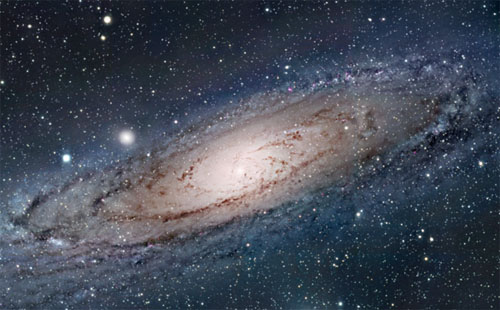by WorldTribune Staff, July 14, 2019
A pair of new international studies which punched holes in the absoluteness of man-made climate change have gotten little-to-no attention in the corporate media.
Researchers from Kobe University in Japan found that high-energy particles from space known as galactic cosmic rays affect the Earth’s climate by increasing cloud cover, causing an “umbrella effect.”

A second study, a paper published by researchers from the University of Turku in Finland, concluded that even though observed changes in the climate are real, the effects of human activity on these changes are insignificant. Such findings create cognitive dissonance for celebrity and media actors committed to the narrative that human behavior is killing the planet.
“We have to recognize that the anthropogenic climate change does not exist in practice,” the study concluded.
Professor Masayuki Hyodo, who led the research team at Kobe University, said: “The Intergovernmental Panel on Climate Change (IPCC) has discussed the impact of cloud cover on climate in their evaluations, but this phenomenon has never been considered in climate predictions due to the insufficient physical understanding of it.”
Professor Hyodo continued: “This study provides an opportunity to rethink the impact of clouds on climate. When galactic cosmic rays increase, so do low clouds, and when cosmic rays decrease clouds do as well, so climate warming may be caused by an opposite-umbrella effect. The umbrella effect caused by galactic cosmic rays is important when thinking about current global warming as well as the warm period of the medieval era.”
A new discovery by Hyodo’s team on winter monsoons provides further proof that the climate changes are caused by the cloud umbrella effect, ScienceDaily reported on July 3.
The study focused on the Chinese Loess Plateau, just south of the Gobi Desert near the border of Mongolia. It found dust has been transported for 2.6 million years to form loess layers — sediment created by the accumulation of wind-blown silt — that can reach up to 200 meters in thickness. If the wind gets stronger, the coarse particles are carried further, and larger amounts are transported. Focusing on this phenomenon, the research team proposed that winter monsoons became stronger under the umbrella effect of increased cloud cover during the geomagnetic reversal. They investigated changes in particle size and accumulation speed of loess layer dust in two Loess Plateau locations.
In both locations, for about 5,000 years during the geomagnetic reversal 780,000 years ago, they discovered evidence of stronger winter monsoons: particles became coarser, and accumulation speeds were up to > 3 times faster. These strong winter monsoons coincide with the period during the geomagnetic reversal when the Earth’s magnetic strength fell to less than ¼, and galactic cosmic rays increased by over 50%. This suggests that the increase in cosmic rays was accompanied by an increase in low-cloud cover, the umbrella effect of the clouds cooled the continent, and Siberian high atmospheric pressure became stronger.”
The findings were published on June 28 in the online edition of Scientific Reports.
In the University of Turku study, Jyrki Kauppinen and Pekka Malmi, from the Department of Physics and Astronomy, said there is proof that the “GCM-models used in IPCC report AR5 fail to calculate the influences of the low cloud cover changes on the global temperature. That is why those models give a very small natural temperature change leaving a very large change for the contribution of the greenhouse gases in the observed temperature.”
Thus, in order to come to the results matching the actual climate change the IPCC has to “use a very large sensitivity to compensate a too small natural component. Further they have to leave out the strong negative feedback due to the clouds in order to magnify the sensitivity.” In addition, Kauppinen and Malmi claim that their paper published on June 29 proves that “the changes in the low cloud cover fraction practically control the global temperature.”
The authors argue that the IPCC has used computational results which can’t be considered experimental evidence, and cite this as the reason for contradictory conclusions.
“The IPCC climate sensitivity is about one order of magnitude (i.e. 10 times) too high, because a strong negative feedback of the clouds is missing in climate models. If we pay attention to the fact that only a small part of the increased CO2 concentration is anthropogenic, we have to recognize that the anthropogenic climate change does not exist in practice,” write Kauppinen and Malmi. “The major part of the extra CO2 is emitted from oceans, according to Henry‘s law. The low clouds practically control the global average temperature. During the last hundred years the temperature is increased about 0.1℃ because of CO2. The human contribution was about 0.01℃.”
Those studies follow another study of 120,000 years of solar cycles by Valentina Zharkova, of Britain’s Northumbria University, which says a natural sun cycle will add 2.5C warming to Earth’s climate in coming centuries.
Intelligence Brief __________ Replace The Media
